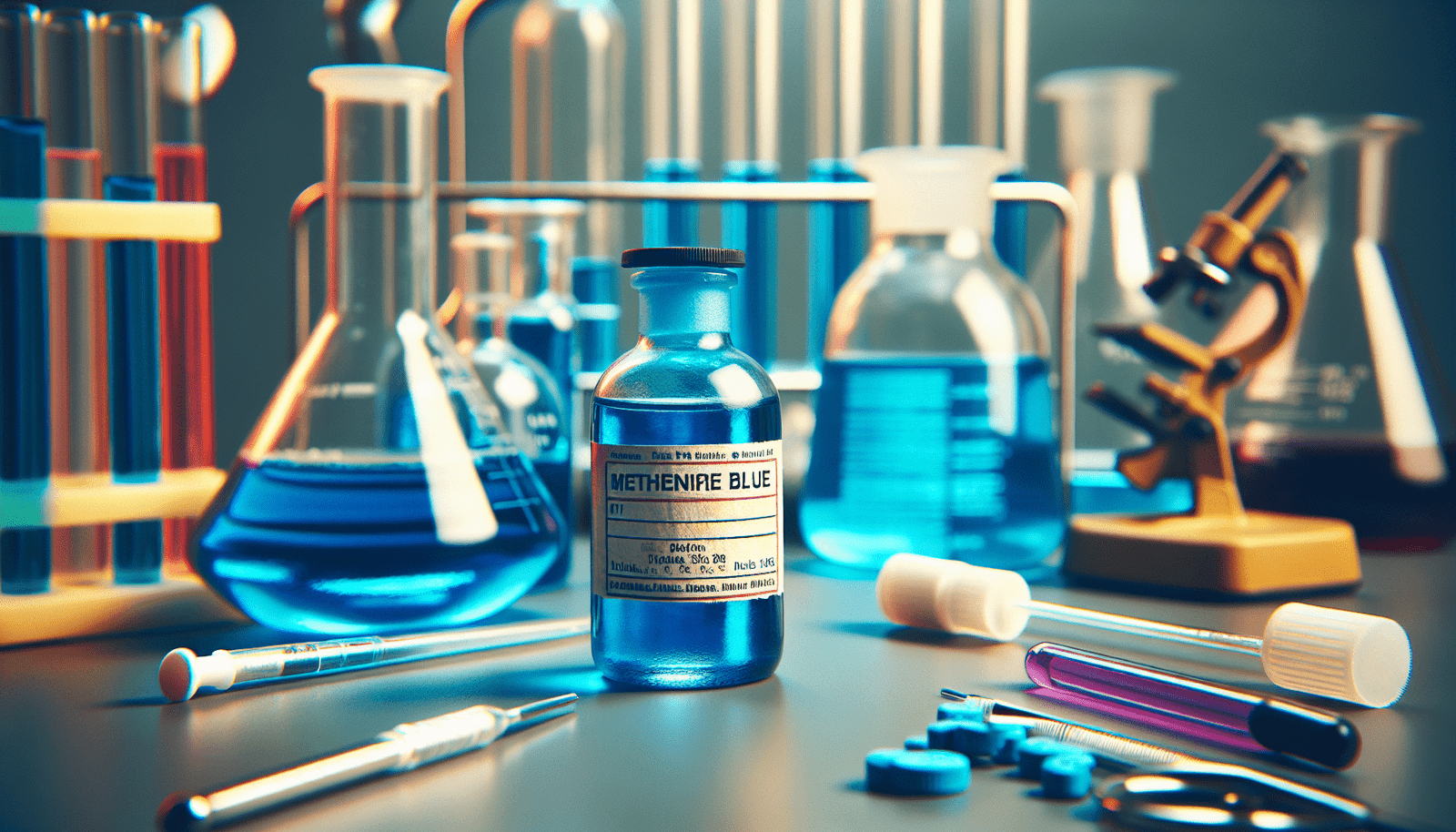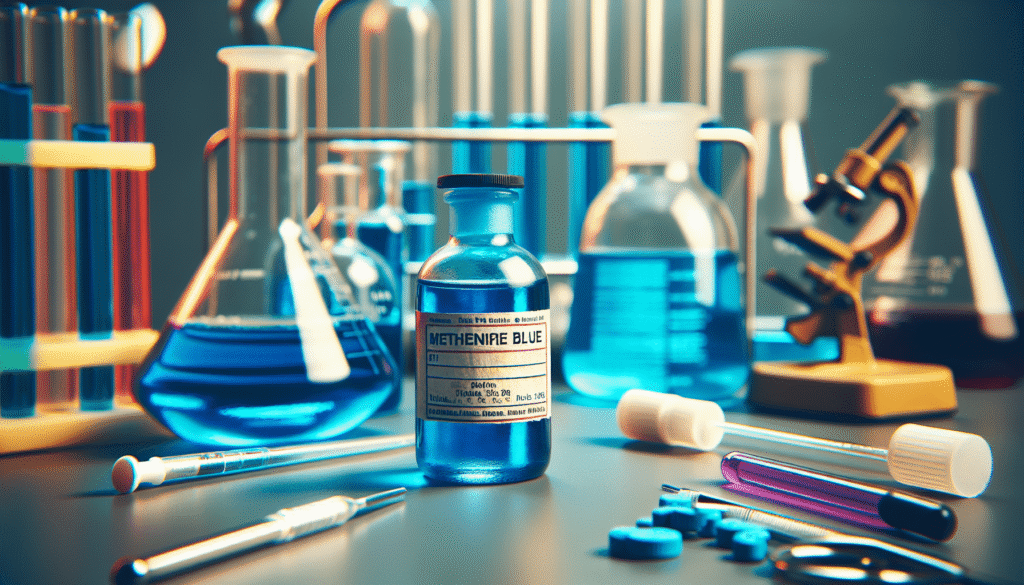
What do you really know about Methylene Blue and its implications in drug testing? Understanding the role of Methylene Blue in drug tests can not only enhance your knowledge but also prepare you for potential encounters with this substance, whether personally or professionally.

Understanding Methylene Blue
Methylene Blue is a synthetic dye that has been used in a variety of medical applications since its discovery in the late 19th century. Originally utilized as a textile dye, its therapeutic properties have led to its use in areas such as treating methemoglobinemia, a condition where the blood cannot carry oxygen effectively.
Properties of Methylene Blue
This compound possesses distinct chemical properties. It is soluble in water, which makes it easy to administer, and it has a unique ability to absorb and emit light. The compound has notable redox properties, allowing it to act as both an electron donor and acceptor. These characteristics lend Methylene Blue to various medical applications beyond just its initial use as a dye.
Medical Uses
Methylene Blue is employed to treat several medical conditions. In particular, it plays a crucial role in managing methemoglobinemia, where it helps revert methemoglobin back to hemoglobin, thus restoring the oxygen-carrying capacity of the blood. Additionally, it has been considered for use in treating urinary tract infections and as a potential antimalarial agent.
The Role of Methylene Blue in Drug Testing
In the context of drug testing, Methylene Blue appears in various tests, often as a means to verify the integrity of the sample being tested. It is essential to understand how this compound interacts with standard drug testing panels.
Detection of Substance Usage
Methylene Blue can impact the results of drug tests by acting as an adulterant. Certain drug testing methods may be designed to detect the presence of Methylene Blue, which can indicate tampering or adulteration of a urine sample. Understanding this aspect is critical, especially in environments where drug testing is routine.
Test Samples and Methylene Blue
When Methylene Blue is present in a urine sample, the test can yield false positives, particularly for substances like amphetamines and certain hallucinogens. This outcome can complicate the interpretation of the results and may require further confirmatory testing to ascertain the actual presence of the substances.
Methylene Blue and Drug Test Administration
Administration of Methylene Blue can vary based on the medical context and the requirements of a drug screening. Factors such as dosage, method of administration, and timing relative to the test can all influence the outcomes.
Dosage and Timing
The dosage of Methylene Blue administered can affect its detectability in drug tests. A lower dosage might not yield traces in a standard urine drug screen, while a higher dose could lead to a significant presence in urine. Moreover, the timing of administration relative to the test can also influence results; for instance, if taken shortly before the test, it is more likely to be detected.
Sample Integrity Testing
Professionals often employ integrity testing to validate urine samples during drug testing. The presence of Methylene Blue may indicate that a sample has been tampered with, causing results to be flagged for further review. In such cases, collectors may reject the sample, leading to potential consequences for the individual being tested.
Legal and Ethical Considerations
The intersection of Methylene Blue and drug testing carries various legal and ethical implications. Understanding these is essential for both healthcare providers and individuals undergoing drug tests.
Privacy and Confidentiality
When undergoing a drug test, individuals have a right to privacy concerning their test results. However, the presence of substances like Methylene Blue can complicate confidentiality due to its potential to indicate sample tampering. Clear policies should be in place to protect individuals’ rights while maintaining the integrity of testing processes.
Consequences of Adulteration
When Methylene Blue is used to adulterate a urine sample, the consequences can be severe. Depending on the context—whether in a workplace, legal, or medical setting—individuals may face disciplinary actions, including termination of employment, legal penalties, or loss of medical privileges.

Future Directions in Methylene Blue Research
Ongoing research into Methylene Blue continues to unfold new possibilities for its applications and implications in drug testing.
Innovations in Drug Testing
As technology progresses, the methods of drug testing are evolving. New testing techniques may emerge that could minimize the potential for false positives due to Methylene Blue or other substances. Development of advanced detection systems could lead to more reliable results while enhancing the fairness of drug screening.
Therapeutic Advances
Research also suggests potential expanded uses for Methylene Blue in the medical field, including its role in treating neurodegenerative diseases. Scientists are beginning to explore the compound’s neuroprotective properties, which may open avenues for innovative treatments. If these advancements come to fruition, they could influence regulations and practices concerning drug testing in the healthcare industry.
Understanding Methylene Blue’s Impact on Health
Given its varied uses and implications, understanding how Methylene Blue impacts health is vital for both healthcare professionals and patients alike.
Dosage and Health Risks
While Methylene Blue is mostly safe when administered under professional supervision, high doses can lead to adverse effects. Symptoms may include nausea, vomiting, dizziness, and even more serious side effects such as serotonin syndrome, particularly when used alongside certain medications.
Informed Decision-Making
If you are scheduled for a drug test and are aware that you have been exposed to Methylene Blue—whether accidentally or intentionally—it is crucial to disclose this information to the testing authority. Transparency can lead to more accurate interpretations of your drug test results.
Conclusion
Understanding Methylene Blue and its role in drug testing is not just a matter of academic interest; it has practical implications for how you navigate medical and employment situations. Being informed about how this substance can affect test results and the legal and ethical considerations surrounding its use is essential. The evolving landscape of drug testing technology and the ongoing research into Methylene Blue suggest that its influence will continue to grow, making it imperative for individuals and professionals to stay informed.
As you move forward, keep in mind that knowledge is power, and being well-versed about Methylene Blue can better equip you to manage its implications in your life or profession. The interplay between healthcare, legality, and ethics surrounding this compound will only become more prominent, emphasizing the importance of ongoing education and awareness in the ever-changing field of drug testing.